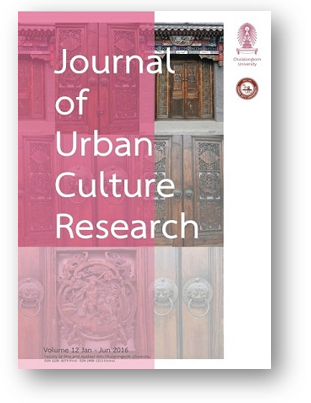Utilization of Waste Materials in the Manufacture of Thai Home Decorations
DOI:
https://doi.org/10.14456/jucr.2016.6Keywords:
Utilization of Waste from Thai Cities, Re-Material Paper Stucco, Thai Home Decorative Products.Abstract
This research is on the utilization of unwanted city waste materials in the creation of Thai decorative home products so that they maintain the durability and quality similar to traditional battered mortar. The researcher has investigated, interviewed and compiled information from nine specialists and national artists residing in Petchaburi, Sukhothai and Bangkok. Two were traditional battered mortar specialists, six were stucco artists and one a material specialist. From the interviews, the researcher selected 6 formulas of traditional battered mortar that were appropriate for the objectives of the research and adapted the proportions to determine the percentage of waste materials acceptable by these specialists. The resulting formula consisted of 35% lime, 25% fine sand, 20% recycled paper, 15% cultivated banana (Nam Wa) and 5% latex glue. The material was molded using five different methods for evaluating their suitability. The study found that Re-Material Paper Stucco could be molded in the same manner as the traditional mortar in terms of bonding, flexibility for pressing and creating patterns, as well as color stability. All specialists unanimously agreed that recycled paper was suitable as component in the production of “green production” of Thai home decorations.
Downloads
Published
How to Cite
Issue
Section
License
Authors authorize the JUCR to publish their materials both in print and online while retaining their full individual copyright. The copyright of JUCR volumes is retained by Chulalongkorn University.
The views and opinions expressed herein are those of the individual author(s) and do not necessarily reflect the policies or opinions of the Journal (JUCR), it editors and staff, Chulalongkorn University, or Osaka Metropolitan University.








